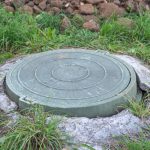Septic Safe Landscaping Tips

1. Know the location of your septic system
Before you begin any landscaping projects, it is crucial to know the location of your septic system. This will help you avoid accidentally damaging any of the vital components of the system, such as the drainfield or the septic tank. Consult your property’s blueprint or hire a professional to locate these key components and mark them for future reference.
2. Avoid planting trees or shrubs near the septic system
Tree roots can cause significant damage to septic system components, such as the drainfield or pipes. As trees grow, their roots can penetrate and clog the pipes, causing backups and system failures. It is best to avoid planting trees or large shrubs within the vicinity of the septic system. If you must plant near the area, opt for smaller, non-invasive plants that have shallow root systems and will not pose a risk to the septic system.
3. Be mindful of water usage
Excessive water usage can strain your septic system and lead to inefficiencies or failure. When planning your landscaping, consider plants that require minimal irrigation to reduce water consumption. Additionally, make sure your gutters and downspouts are directing water away from the septic system’s drainfield. Proper water management will help maintain a balanced and healthy septic system.
4. Choose septic safe fertilizers and pesticides
Chemicals found in fertilizers and pesticides can negatively impact the bacteria in the septic tank that break down waste. Avoid using harsh chemicals near your septic system to prevent disrupting the natural microbial balance. Instead, opt for organic alternatives or consult with a landscaping professional who specializes in septic safe solutions.
5. Create a designated septic system access area
Establishing a designated access area for your septic system will help prevent unnecessary damage. Avoid parking vehicles or heavy machinery over the septic tank or drainfield. If you need to access the area for maintenance or repairs, make sure the ground is firm and dry to prevent compaction or damage to the septic system.
6. Consider native and drought-tolerant plants
Native plants are well-suited to the climate and soil conditions of your area, making them a great choice for septic safe landscaping. They tend to require less water and care, reducing the strain on your septic system. Additionally, drought-tolerant plants are a wise choice as they can survive with minimal irrigation. Consult a local nursery or landscaping professional for suggestions on native and drought-tolerant plants that are suitable for your region.
7. Regularly monitor your septic system
Lastly, it is essential to regularly monitor the health of your septic system. Have a septic tank professional inspect and pump your septic tank on a recommended schedule to remove accumulated solids and avoid backups. By adhering to a proper maintenance routine, you can catch any potential issues early on and prevent costly repairs.
Conclusion
Septic safe landscaping is a crucial aspect of maintaining a healthy septic system. By following these tips and being mindful of your septic system’s location and needs, you can prevent damage, reduce water consumption, and promote the longevity and functionality of your septic system. A well-maintained septic system will not only save you money in the long run but also contribute to a healthier environment for you and your community.
Got Questions? Let Us Help!
Categorised in: Septic Service